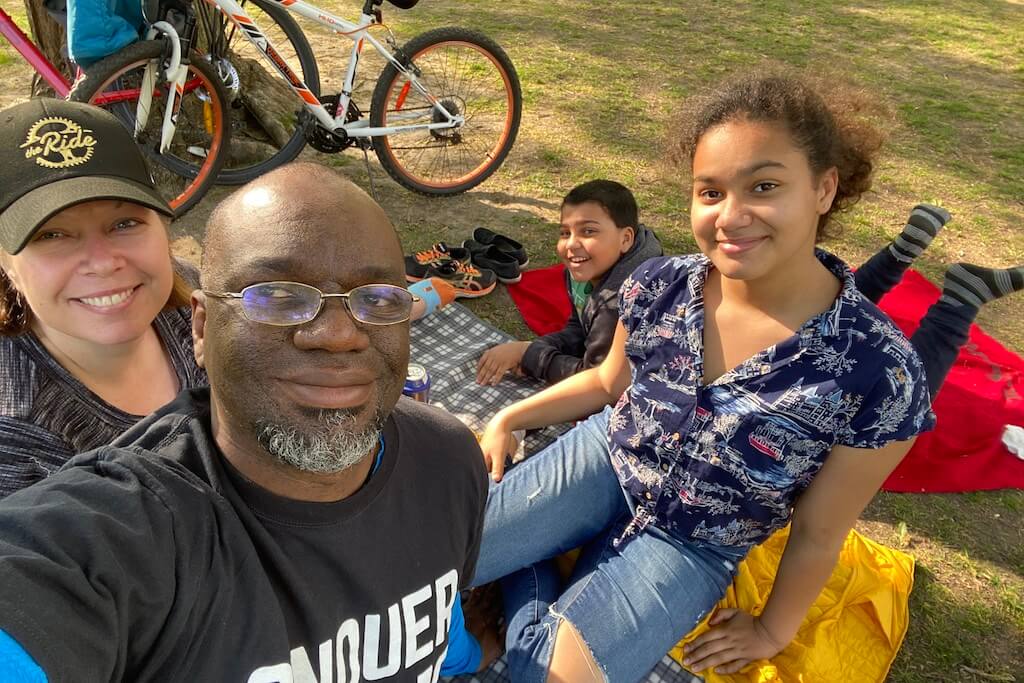Autumn Gear Guide
Find inspiration in our Gear Guide that will keep you out on your bike through wind or rain.
Download NowLanrick Bennett started cycling in earnest in 2018 when his daughter wanted to ride her bicycle to school, which kick-started his cycling advocacy and resulted in the Toronto father being named Bicycle Mayor of the Canadian city. Bennett joins a host of other cycling advocates around the world who make up the Bicycle Mayor Network, […]

Lanrick Bennett started cycling in earnest in 2018 when his daughter wanted to ride her bicycle to school, which kick-started his cycling advocacy and resulted in the Toronto father being named Bicycle Mayor of the Canadian city.
Bennett joins a host of other cycling advocates around the world who make up the Bicycle Mayor Network, which began in 2016 with the election of Anne Luten as the bicycle mayor of Amsterdam, where the program is based.
“The Bicycle Mayor Network is a global initiative to accelerate the progress of cycling in cities focused on bringing cycling progress in a city,” Bennett says. “A Bicycle Mayor is a two-year volunteer role. I hope what it means is an added voice from someone that truly believes these two-wheeled machines can make a huge difference in our communities, neighborhoods, and this city.”
Bennett, who is a managing director at 8 80 Cities, rode his bicycle alongside his daughter to school for a long period of time before a traumatic incident ended the daily rides, and began the advocacy of his daughter and him.
“She loved it. We rode all over the city. She loved it right up until a cyclist was killed by a driver on the same route we would take to get home from school,” he says. “She was devastated. She rode with me to school for a few more months after that.”
Bennett says, his daughter wrote to her city councilor to bring protected cycling infrastructure to her street. But after getting a copy-and-paste response, she gave up riding.
“She’s still my cheerleader though and has given the nod for my son to ride by my side,” he says. “So my own riding now, my advocacy is selfishly to persuade, pressure, maybe even shame my local elected representative to build the protective bike lanes that weren’t there when that cyclist was killed. To give my daughter enough confidence to ride again with me.”
The Bicycle Mayor Initiative has a mission of creating more trips by bicycle, like those of Bennett and his daughter, to schools, work, and around town to the tune of 50 percent of all city trips by the end of the decade. For some perspective, Copenhagen is currently just making this rate. Toronto is still very much in the single digits in this category. But it is slowly improving.

“Toronto has made a great start on a handful of fronts but I chose to take this role because I see the possibilities and the enthusiasm to fight climate change and to build a more equitable city and I believe it’s time for us to join together and create the change we want to see,” Bennett says. “Every person in this city, whether they’re a child, a senior citizen, a person with disabilities, a delivery worker or anyone else, should be able to safely and comfortably use a bike for transit year-round throughout our city. We’ve got a long way to go to building out real, protected bike infrastructure, making sure they’re maintained for use year-round, and that all major transit destinations are easily accessible for people on bikes.”
Bennett, as a person of color, also wants to see more diversity in the city bike lanes.
“I’m doing this because I want to see significantly more people that look like me, parents, people of color, and people of all ages, abilities, and backgrounds, cycling year-round in protected, beautiful bike infrastructure, right here in the City of Toronto,” he says.
Toronto’s bicycle network got a big boost recently when the city voted to approve a slew of once-temporary cycling lanes that were added during the COVID-19 pandemic.
Bennett says, to make a significant change, collaboration is the key.
“Collaboration is our biggest opportunity. We have so many good people working to do good things across this city and many don’t know how much including bicycles into their strategies can help achieve their goals,” he says. “Studies show that small businesses really start to see financial benefits when complete bike infrastructure is installed, bringing new customers to their stores.”
Other examples include bringing bicycle infrastructure into at-risk communities for disenfranchised individuals who can’t fork out the $13,000 it takes to operate a car for a year. Want to lower carbon emissions? Bennett says 36 percent of them come from transportation.
“Cargo bikes for moving kids and shipments, e-bikes, and disability accessible bikes are all solutions that are better than electric vehicles for cutting out those emissions,” Bennett says. “Plus, the city gets safer every time we get people to switch to smaller, lower-weight transit options that don’t do anywhere near as much damage when they crash. For many people, a bike is the ultimate urban transit solution that they haven’t had discovered yet.”
Find inspiration in our Gear Guide that will keep you out on your bike through wind or rain.
Download Now
Leave a comment